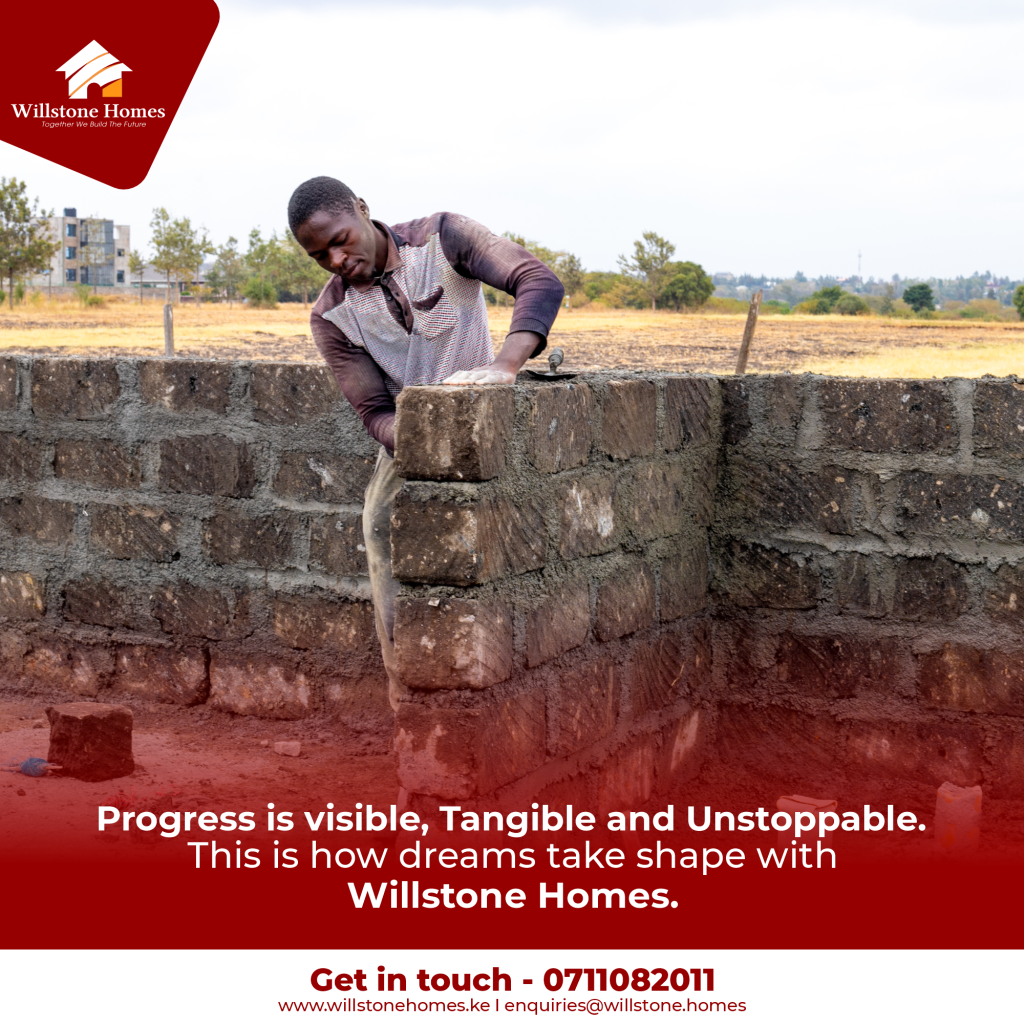For decades, the 50×100 plot has symbolised the Kenyan dream: a small piece of land, a perimeter fence, and a slowly rising family home built over the years. This model worked well when land was cheap, population densities were low, and infrastructure pressure was manageable. But by 2025, a major shift is underway. The classic 1/8-acre plot is no longer the economic or urban ideal it once was.
Across Nairobi and its satellite towns—Juja, Ruiru, Kitengela, Syokimau, Kamulu, Athi River—a quiet revolution is unfolding. Densification, infrastructure shortages, lifestyle changes, and the return of younger, urbanised homebuyers are reshaping what a “normal” home looks like.
As a result, the future of housing in Kenya is moving decisively toward cluster estates, mixed-use developments, and semi-detached homes that optimise land, distribute costs, and offer better security and amenities.
Why the traditional 50×100 model is collapsing

The decline of the 1/8-acre plot is not emotional—it is mathematical, technological, and infrastructural.
1. Land prices have outpaced salaries
By 2024, land in most Nairobi suburbs was appreciating at 8–12% annually, while average Kenyan incomes grew by less than 3%. A plot that cost KSh 350,000 in Kitengela in 2005 now sells for KSh 3 million or more.
The mismatch has made the 50×100 dream unreachable for many emerging households, especially young professionals who prefer turnkey solutions rather than 10-year construction projects.
2. Infrastructure makes individual plots expensive
When homeowners build individually on scattered 50×100 parcels, they carry the full cost of water lines, electricity poles, drainage, perimeter walls, roads, and security.
This individualized model creates “infrastructure islands,” where:
- each house builds its own borehole or septic tank
- roads remain dusty, ungraded, or impassable
- security is fragmented
- drainage collapses every rainy season
By contrast, cluster estates spread these costs across dozens of households, making them cheaper and more professionally managed.
3. Urban planners have moved on
Globally, cities are abandoning low-density urban sprawl because it creates:
- long commuting distances
- pressure on roads
- expensive service delivery
- unequal development
Kenya is following the same path. Nairobi’s long-term zoning recommendations now encourage compact, medium-density estates. This means more townhouses, more duplexes, more apartments—and fewer single homes on 1/8-acre parcels.
4. Younger buyers prefer convenience, security, and lifestyle
The millennial buyer (who now dominates the mortgage and SACCO financing market) prefers controlled estates with:
- functioning street lighting
- paved internal roads
- play areas
- waste collection
- CCTV and controlled access
The isolated home on a large plot, with its own security challenges and maintenance burdens, increasingly feels outdated.
5. Climate change is punishing poor estate planning
Flooding in Kenya is no longer simply a rainfall problem but an urban-design problem. Scattered homes built without drainage corridors worsen stormwater flow, causing flash flooding even in estates far from rivers.
Cluster and mixed-use estates, on the other hand, plan drainage from the start: retention ponds, culverts, gradient-controlled roads, and professional water modelling.
Read Also: The Hidden Science Of Estate Roads: Why 80% Of Estate Flooding Has Nothing To Do With Rain
What will replace 50×100 plots by 2030

The shift is already visible. The future of housing in Kenya is heading toward shared infrastructure, higher efficiency, and better land utilisation.
Cluster housing
These are gated mini-communities of 20–100 homes built uniformly and sharing infrastructure. They use land more efficiently: instead of twenty individual 50×100 plots, developers can fit up to forty or more homes while still offering private yards and parking.
Cluster estates also deliver professional estate management—something the traditional plot model cannot achieve.
Semi-detached homes (duplexes)
Duplexes are rising fast because they cut land cost per family by half and reduce construction expenses through shared walls. A 50×100 plot that once held one family home now holds two high-value units.
By 2030, semi-detached designs will likely dominate middle-income estates, especially in Nairobi’s commuter belt.
Mixed-use estates
These estates combine residential spaces with shops, offices, recreational areas, kindergartens, clinics, and urban amenities. This reduces commuting and creates walkable neighbourhoods—an emerging global trend.
In Nairobi, mixed-use planning is already visible in Tatu City, Two Rivers, Tilisi, and other master-planned zones. The model is spreading into smaller developer projects.
Vertical housing
Even previously low-density zones like Ruai, Kamulu, and Malaa are witnessing the rise of 3–5 storey apartments. This is driven by the need to optimise land and meet housing demand without pushing the city further into sprawl.
By 2030, vertical living will no longer be just for Nairobi’s inner zones—it will be standard across the entire periphery.
Economic drivers behind the shift

The next five years will consolidate this transition due to:
1. Mortgage expansion and affordable housing policies
New financing models—rent-to-own, tenant purchase schemes, developer-backed mortgages, and SACCO-led construction—favour structured estates over scattered plots.
2. Technological changes in construction
Panel systems, prefabrication, and modular construction work best in uniform estates. Developers prefer predictable, repeatable designs that reduce cost and time.
3. Safety and security pressures
Cluster estates allow for a single CCTV system, one controlled gate, and fewer entry points. Insurance companies also favour them due to lower risk.
4. Rising value of professionally planned communities
Resale value in planned estates is consistently higher. A home in a controlled development appreciates faster because buyers are paying for convenience, not just land.
Table: Comparison of housing models shaping Kenya’s future
| Housing model | Land efficiency | Cost per homeowner | Infrastructure reliability | Appeal by 2030 |
|---|---|---|---|---|
| 50×100 plots | Low | High | Low | Declining sharply |
| Cluster housing | Medium-high | Medium | High | Very strong |
| Semi-detached homes | High | Medium-low | High | Strong |
| Mixed-use estates | Very high | Medium | Very high | Dominant |
| Vertical apartments | Highest | Lowest | High | Expanding rapidly |
What this means for the average Kenyan buyer

By 2030, the housing market will reward buyers who choose planned communities over individual scattered plots. As land becomes scarcer and urban services more strained, value will shift toward estates that deliver structure, infrastructure, and predictability.
The future of housing in Kenya is no longer about buying the largest piece of land you can find. It is about buying into a community where systems work: water, security, drainage, power, and roads.
In short, the 50×100 plot is becoming a luxury, not the starter home model it once was. The country is moving toward smarter, more integrated living—because the economics, demographics, and climate realities leave no alternative.




